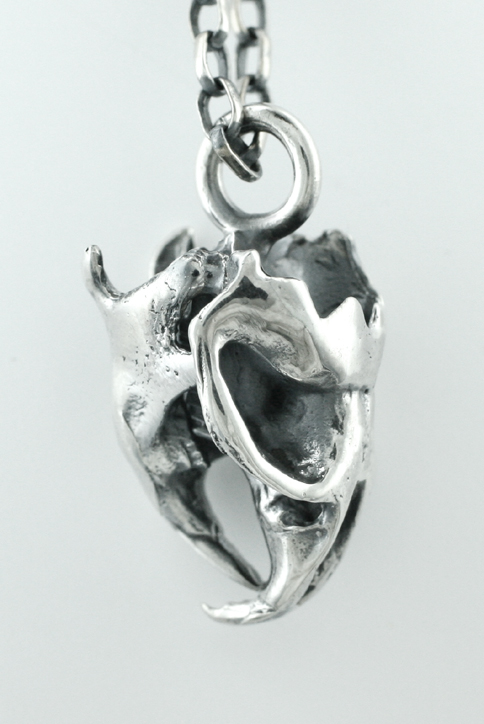Harakiri: A New Mode of Finding Jewels

Almost a decade ago, a friend hang gliding over the Quebec wilderness made a discovery that would inspire Mireille Boucher’s Harakiri jewelry line—after its first owner had thrown it away, or, more precisely, thrown it up. From the air, Boucher’s friend noticed his dog wild with glee in the tall grass, and he landed to investigate. What he found he remembered from his rural childhood and he called Boucher right away, knowing she would appreciate the unconventional treasure. Boucher, a Montreal-based designer, eagerly cracked open the find—a ball of bones regurgitated by an owl during digestion—and discovered perfectly preserved mouse and rat skeletons, stripped clean by the owl’s stomach. A line of striking memento mori jewelry was born.
The simplicity of Boucher’s pieces, often a silver-cast bird skull or a single bone on a chain, can appear unformed from certain angles and unnervingly precise from others, which renders them poignant, private and elegant. “They are like little talismans,” Boucher explains over coffee during Montreal Fashion Week, where she has taken a break from her usual role as accessories designer for Denis Gagnon, Quebec’s leading conceptual designer. “I was not familiar with the concept of memento mori when I first discovered them, but I understood that wearing these bones was my way of deferring my fears of death.”
Before coming upon the bones, Boucher had earned herself a cult following by casting a collection of a 18th and 19th Century crucifixes that she had inherited from her uncle. Outside Montreal, high-end Gothic accessories often haunt catwalks, but Boucher’s sterling silver animal pieces still cause controversy in the French Canadian city, where the reigning aesthetic is crafty, frilly and, as Boucher describes it, “very Madame.” But Boucher has found a nest in the city’s concept store, Rebourn. “I have been making these for a long time,” she says. “For me this is not a trend. How can trying t deal with death with dignity be a trend?






